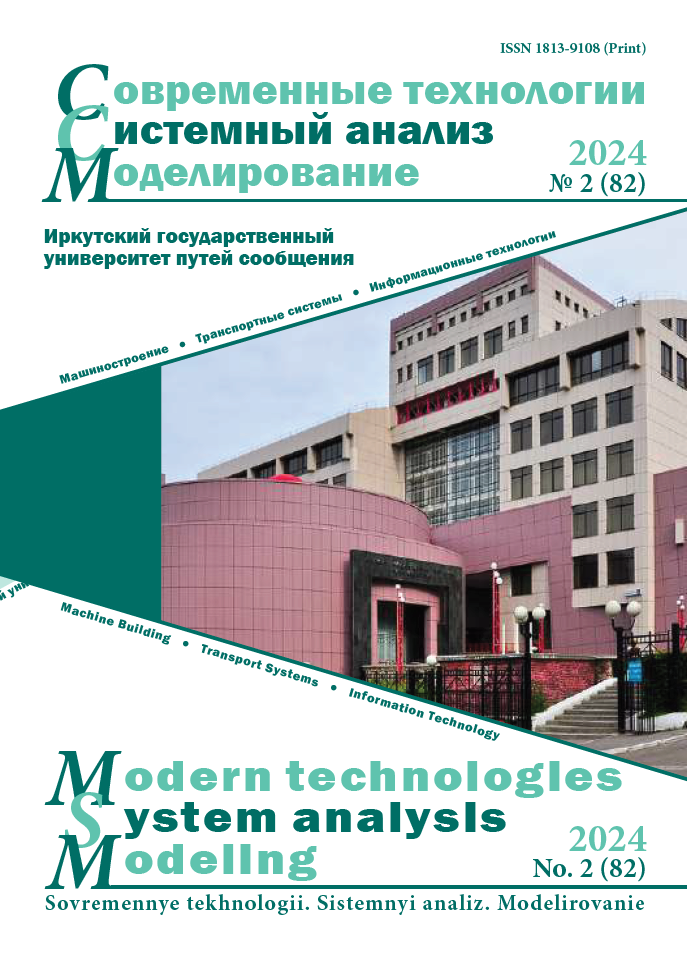Application of LSTM-models in problems of modeling and forecasting the geometry of a rail track
Keywords:
railway track, modeling, neural networks, track geometry, track irregularities, LSTM-modelAbstract
Article describes the current tasks related to the diagnosis and safety of traffic on railway transport and, in particular, on the railway track. These tasks are related to the accelerated pace of digitalization of railway transport, as well as to the growth of the economy and to the multiple prerequisites for the presentation of additional methods for assessing the condition of the track to make more effective management decisions. Brief reviews of various modeling options are given as additional methods for solving the tasks set. Promising methods of using neural networks are shown. Classes of tasks in which neural networks can be used are considered. The problem of using neural networks is outlined, namely, the lack of a methodological framework that standardizes the use of neural networks. The main condition for the use of neural networks is a reliable training sample. As an example of using a neural network in the task of modeling the geometry of a rail track, the LSTM model is selected. The architecture of the LSTM model is described. An example of modeling the actual vertical irregularities on a selected section of railway track is presented, and the quadratic modeling errors are calculated. The expediency and high quality of modeling using the LSTM-model are noted, as well as an increase in the value of the mean square error with increasing steps for forecasting, which may be due to an insufficient number of values for the training sample. The continuation of the research will be to achieve lower error values and increase the accuracy of the model, as well as the use of other neural networks of various architectures to solve the problem of modeling the geometry of the rail track with its subsequent comparison to the LSTM model.
References
Спектральный состав неровностей пути и напряженно-деформированное состояние его элементов / А.Я. Коган, М.А. Левинзон, С.В. Малинский и др. // Вестник ВНИИЖТ. 1991. № 1. С. 39–43.
Сивицкий Д.А. Анализ опыта перспектив применения искусственных нейронных сетей на железнодорожном транспорте // Вестн. Сибир. гос. ун-та путей сообщ. 2021. № 2 (57). С. 33–41.
Каменский Д.А. Применение моделей векторной авторегрессии при прогнозировании в финансах и экономике // Фундаментальные исследования. 2019. № 5. С. 45–49.
Vector Autoregression (VAR) for Multivariate Time Series // geeksforgeeks : site. URL : https://translated.turbopages.org/proxy_u/en-ru.ru.90520b89-66978ac7-0d872144-74722d776562/https/www.geeksforgeeks.org/vector-autoregression-var-for-multivariate-time-series/ (Accessed March 25, 2024).
Хайкин С. Нейронные сети : полный курс. М. : Вильямс, 2006. 1104 с.
Пилецкая А.В. Искусственная нейронная сеть и ее применение при диагностике железнодорожных путей // Молодой ученый. 2020. № 20 (310). С. 48–50.
Deep convolutional neural networks for detection of rail surface defects / S. Faghih-Roohi, S. Hajizadeh, A. Núñez et al. // Inter-national joint conference on neural networks (IJCNN). Vancouver, 2016. P. 2584–2589. DOI: 10.1109/IJCNN.2016.7727522.
Денисенко М.А., Исаева А.С., Коц И.Н. Тестирование прототипа системы мониторинга состояния рельсового пути с ис-пользованием LSTM рекуррентных нейронных сетей // Науч.-техн. ведомости Санкт-Петербург. гос. политехн. ун-та. Физико-математ. науки. 2022. Т. 15. № S3.2. С. 51–55.
Сорокин Д.В., Кравец А.С. Теоретические предпосылки использования нейронных сетей для решения эксплуатационных задач на железнодорожном транспорте // Транспорт: наука, образование, производство : сб. науч. тр. Ростов н/Д, 2019. Т. 1. С. 214–218.
Незевак В.Л. Совершенствование модели влияния параметров графика движения поездов на тяговое электропотребление на участках постоянного и переменного тока c I и II типом профиля пути при помощи регрессионных моделей и нейронных сетей // Вестник транспорта Поволжья. 2017. № 6 (66). С. 34–44.
Анализ результатов работы и оценка эффективности гибридной модели идентификации подвижных единиц железнодорожного транспорта / Д.С. Гвоздев, М.Д. Линденбаум, В.В. Храмов и др. // Вестн. Ростов. гос. ун-та путей сообщ. 2013. № 4 (52). С. 47–54.
Railway passenger traffic volume prediction based on neural network / W. Zhuo, J. Li-Min, Q. Yong et al. // Applied Artificial Intelligence. 2007. Vol. 21. Iss. 1. P. 1–10. DOI: https://doi.org/10.1080/08839510600938409.
Railway freight volume forecasting of neural network based on economic cycles / Y.-H. Guo, Z.-Y. Chen, F.-L. Feng et al. // Tiedao Xuebao. 2010. Vol. 32, Iss. 5. P. 1–6.
Рекуррентная нейронная сеть (RNN): виды, обучение, примеры // Neurohive : сайт. URL: https://neurohive.io/ru/osnovy-data-science/rekurrentnye-nejronnye-seti/ (Дата обращения 14.03.2024).
Hochreiter S., Schmidhuber J. Long Short-Term Memory // Neural Computation. 1997. Vol. 9. Iss. 8. P. 1735–1780. DOI: https://doi.org/10.1162/neco.1997.9.8.1735.
Ahmed M. Predicting track geometry using machine-learning methods : мaster’s theses. Newark, 2023. 134 p.
ADF тест для анализа временных рядов // Русские Блоги : сайт. URL : https://russianblogs.com/article/4449640394/ (Дата обращения 30.03.2024).
Решение проблем с последовательностью с помощью LSTM в Keras // Rukovodstvo : сайт. URL : https://rukovodstvo.net/posts/id_976/ (Дата обращения 05.04.2024).


